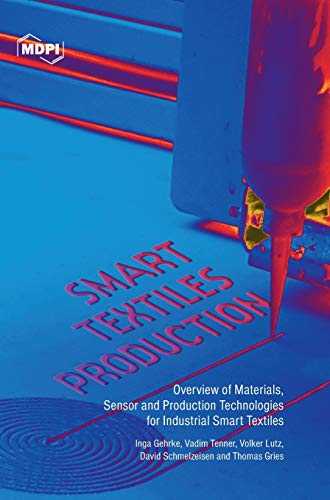

Most ebook files are in PDF format, so you can easily read them using various software such as Foxit Reader or directly on the Google Chrome browser.
Some ebook files are released by publishers in other formats such as .awz, .mobi, .epub, .fb2, etc. You may need to install specific software to read these formats on mobile/PC, such as Calibre.
Please read the tutorial at this link. https://ebooknice.com/page/post?id=faq
We offer FREE conversion to the popular formats you request; however, this may take some time. Therefore, right after payment, please email us, and we will try to provide the service as quickly as possible.
For some exceptional file formats or broken links (if any), please refrain from opening any disputes. Instead, email us first, and we will try to assist within a maximum of 6 hours.
EbookNice Team

Status:
Available4.4
32 reviewsThe research field of smart textiles is currently witnessing
a rapidly growing number of applications
integrating intelligent functions in textile substrates.
With an increasing amount of new developed product
prototypes, the number of materials used and that of
specially designed production technologies are also
growing.
This book is intended to provide an overview of materials,
production technologies, and product concepts
to different groups concerned with smart textiles. It
will help designers to understand the possibilities of
smart textile production, so that they are enabled to
design this type of products. It will also help textile
and electronics manufacturers to understand which
production technologies are suitable to meet certain
product requirements.
After an introduction to smart textiles and their market
relevance, different material types for functional
textiles are described along with their properties,
application areas, and product examples. Special
attention is given to materials for the realization of
electrical conductivity in textiles, as these are crucial
for the following overview on sensor and production
technologies. Next, textile-based sensors are
introduced. While numerous textile-based sensors,
ranging from sensing fibers to coatings and three-dimensional
structures, have been developed, their
specific properties and usage are not clear. Bosowski
et al. have suggested a structure for a classified catalogue
as knowledge basis to support the smart textile
product development process. This chapter develops
the classification further and implements it in a catalogue
to be used by practitioners from research and
industry when developing and designing textiles with
sensing capabilities. The full catalogue is reported in
the appendix. The third part of the book starts by describing
the state of the art of research on production
technologies for the integration of conductive materials
into textile substrates, which include weaving,
knitting, embroidering, printing, without mentioning
specific products. Different variants of each technology
are presented. Additionally, associated technologies
to integrate electrical components in textile substrates
are outlined. This part closes by reporting the
current state of research on automated production
systems for electronics integration into textiles. In the
last part of the book, product and design concepts
for smart textiles are evaluated along the example of
touchpads.